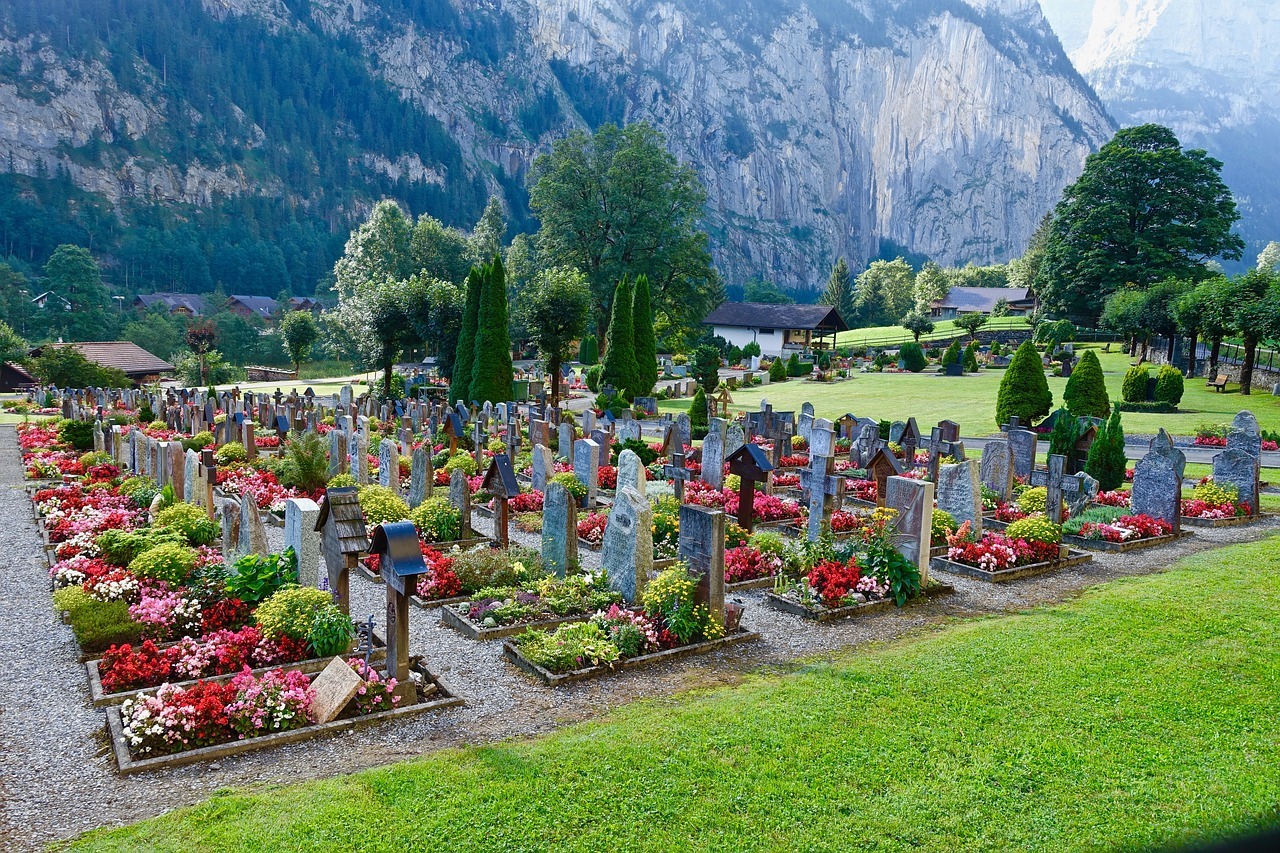Despite the stunning serenity and vast vistas of Switzerland, one of the small country’s most striking features is its unusually beautiful graveyards. Visitors more familiar with the aged, dilapidated, and mossy cemeteries of their native countries are stunned by the polished headstones, vibrant, flower beds, and neat rows of graves. The beauty of life is shared with the dead in an awe-inspiring combination of precision and nature. However, all is not what it seems in these Swiss graveyards.
Due to the limited space available in Europe, many countries have had to develop strong policies for land use and conservation. As one of the smaller countries at about the size of Vermont and New Hampshire combined, Switzerland keeps its free space strictly regulated and controlled with military strictness and care. Burial sites are no exception to this governmental control.
If you look at the dates on each headstone in the graveyard, you’ll see that only a few graves are older than twenty-five years. The few older ones are typically family graves with entire generations of ancestors laid to rest together. But what happened to the other older graves? This is where the government’s policies come into play.
Swiss burial plots are not for sale—they’re for rent! The plot is rented for a period of twenty-five years. After the rental period is over, the body is either exhumed or another body is buried above with a new headstone. By essentially recycling the plots, Switzerland preserves the burial tradition while continuing to leave room for the living.
For the 75% of the Swiss population who choose to be cremated, another unique option is a sort of “living burial,” where remains are returned to the earth in a rather unique way. Basically, within forests, the ashes of the dead can be buried in the roots of the trees or spread across the ground. Thus, the remains of a loved one can be preserved within the living organisms of the forest. The Swiss government allows this practice but has a few regulations in place to ensure the forests remain as beautiful and safe as possible. Urns, headstones, or decorations are not allowed in order to keep the forest as unharmed as possible.
Though the unusual burial traditions of Switzerland are a bit startling at first, it remains a fundamental reflection of the efficiency and precision of the Swiss government. On your next visit to Switzerland, take a quiet moment to visit a local graveyard; you’ll see how the Swiss have managed to make death into a breath-taking experience.
Paige Johnson

